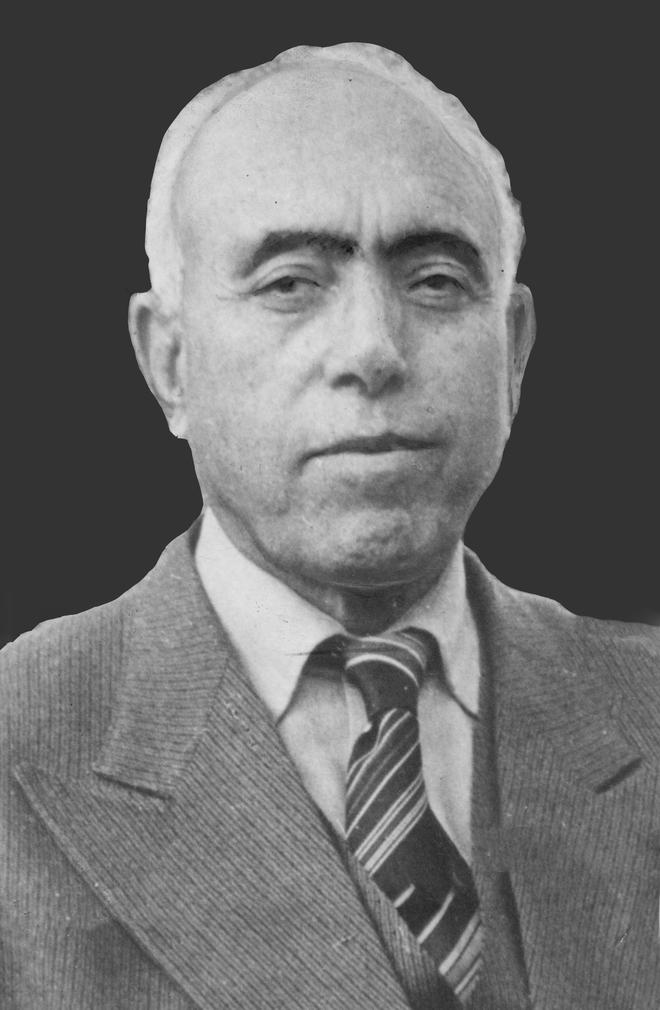
Jammu and Kashmir is back under the spotlight in the light of a controversy generated by the Hindi feature film The Kashmir Files. There is a Tamil Nadu connection to one of the leading political players of Jammu and Kashmir, Sheikh Abdullah (1905-82), who founded the National Conference and ruled Jammu and Kashmir (now a Union Territory) as Prime Minister (1948-53) and Chief Minister (1975-82).
Kodaikanal, a hill station about 120 km from Madurai, played “host” to the Sheikh, also known as Sher-e-Kashmir (The Lion of Kashmir), for nearly two years, from July 1965 to June 1967. The leader was, to quote the country’s then Home Minister, G.L. Nanda, “treated as a special person” at Kohinoor Bungalow, a government-owned circuit house. The Sheikh had been jailed several times and kept at different places. But, in Kodaikanal, he was allowed to move about within the municipal limits but he could not move out of the house in Delhi, where he was kept for a few months later, “without special permission under special reasons,” said a report published by The Hindu on September 24, 1967.
After the leader’s pilgrimage to Mecca and visit to a number of countries, he was arrested on arrival at the Delhi airport in May 1965. The arrest took place in the light of his reported observations (on Jammu and Kashmir) abroad, which had “a perceptible anti-Indian tinge”, according to a monograph published by the Lok Sabha Secretariat on him in 1990. At Algiers, his “long meeting” with the then Chinese Prime Minister, Zhou Enlai, was viewed negatively by Indian leaders in the context of the 1962 India-China war. Lal Bahadur Shastri was the then Prime Minister. The Jammu and Kashmir leader’s passport was impounded and he was first taken to Udhagamandalam in the Nilgiris district where he was kept for two months.
The Sheikh arrived at Kodaikanal, then part of the composite Madurai district, was under controversial circumstances. Seshan: An Intimate Story (1994), a biography on former Chief Election Commissioner T.N. Seshan, who was the Madurai Collector during 1965-67, states that the leader’s “innocuous conversation with someone” in Udhagamandalam was splashed in a newspaper in England, which had published “the anguished cry” of the leader. It was too much for the Central government to absorb. “The decision to shift Kashmir’s Lion to Kodaikanal was instant,” said the book. The leader began to spend his life in Kodaikanal from July 14.
In the hill resort of what is now called Dindigul district, the Sheikh’s stay was no less eventful. A few weeks after his arrival in Kodaikanal, the Pakistani army, in early August, attempted to take Kashmir by force, leading to the resumption of hostilities between the two countries — the India-Pakistan War of 1965. It was around this time that G. Ramachandran, nominated Member of Parliament (Rajya Sabha) and a prominent Gandhian, wanted to meet the Jammu and Kashmir leader. Initially, the Collector, Seshan, was receptive to his request. But when the Gandhian conveyed to Seshan the purpose of his meeting — discussion on the Kashmir issue — the latter cancelled the permission, prompting Ramachandran to accuse the authorities of “creating traditions worse than those under British rule”. His protest did not go in vain as the government allowed two emissaries of Jayaprakash Narayan, who was leading the Sarvodaya movement, to meet the Sheikh in October 1965.
Commenting on the meeting, Nanda told the Rajya Sabha a month later that it had a “very positive reaction”. But he denied the suggestion of Atal Bihari Vajpayee, who led the Bharatiya Jan Sangh, that the Jammu and Kashmir leader was treated as a “royal guest”. He added that “we do not consider him [Sheikh Abdullah] a detenu. We have only restricted his movement and have, accordingly, made some arrangements”. The then Union Minister of State for Home Affairs, Jai Sukh Lal Hathi, informed the House that the monthly expenditure on the leader’s stay varied from ₹1,000 to ₹1,500, and not ₹22,000, as stated in certain reports.
However, three rounds of discussions, each lasting nearly two hours, that the Sheikh had with Jayaprakash Narayan on August 6-7, 1966, marked the high point of his stay at the Kohinoor Bungalow. He and his wife, Akbar Jahan Begum, who had joined him in November 1965, hosted a lunch for the Sarvodaya leader and his wife Prabhavati Devi. Later, Jayaprakash Narayan met the then Prime Minister, Indira Gandhi, in New Delhi to apprise her of his discussions. In late August, the Prime Minister asserted in the Rajya Sabha that the Kodaikanal talks did not, “in any way”, change the policy of the Central government towards the Kashmir question. Terming Jayaprakash Narayan’s meeting with her as “purely personal”, she did not divulge the full details of her discussions with him, though she added that the Kashmir issue was “incidentally” covered. Nanda clarified in the House that Jayaprakash Narayan did not represent the Union government during his meetings with the Sheikh. He also emphasised that “Kashmir is not negotiable”.
In the meantime, prominent personalities launched a campaign to get the leader released. In April 1967, Rajaji, Jayaprakash Narayan and C.D. Deshmukh were among those who demanded his release. On June 8, the Jammu and Kashmir leader was brought to New Delhi for treatment at the All India Institute of Medical Sciences. Before taking a plane at the Chennai airport, where he shook hands with airport and police officials, he told one of them that he would not return to Kodaikanal. Three months later, he was shifted to a bungalow on Kotla Lane, New Delhi. On Id day, January 2, 1968, he was released. At an event in March 1984 in Kodaikanal attended by the then Chief Ministers of Tamil Nadu and Jammu and Kashmir, M.G. Ramachandran and Farooq Abdullah, the circuit house was renamed “Kohinoor Sheikh Abdullah Bungalow”.







